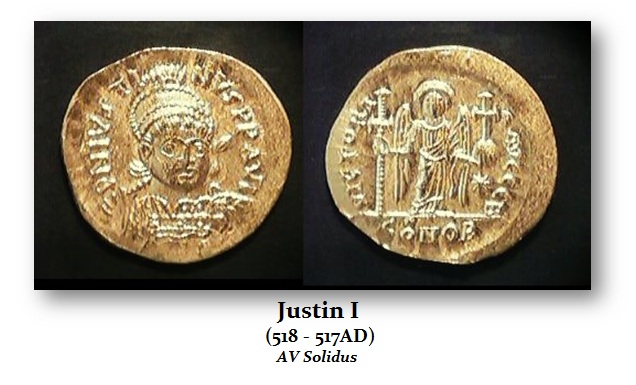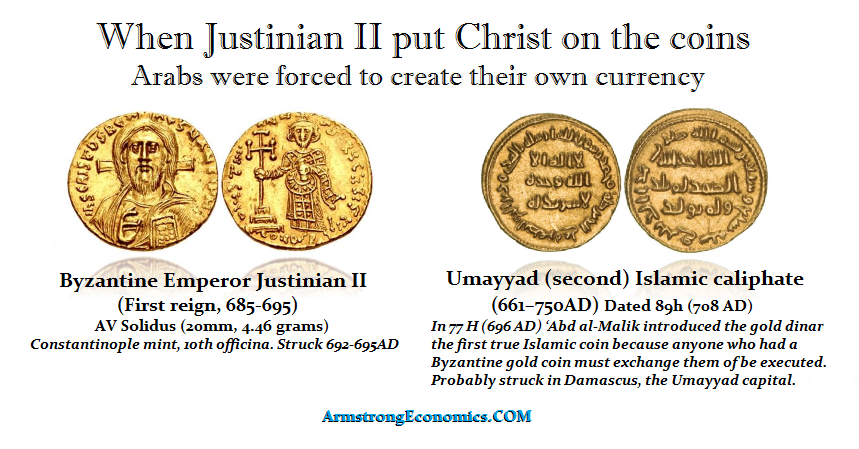When Religion Attacks Itself
 Religion has always influenced economics and geopolitical events. For nearly two hundred years, the emperors of the Eastern Roman Empire, known as Byzantium, had followed the traditions of just placing the emperor’s image on the obverse of their coinage as it had been done since the days of Augustus since 27BC.
Religion has always influenced economics and geopolitical events. For nearly two hundred years, the emperors of the Eastern Roman Empire, known as Byzantium, had followed the traditions of just placing the emperor’s image on the obverse of their coinage as it had been done since the days of Augustus since 27BC.
It was during the reign of Justinian II, who was ambitious and passionate about restoring the Roman Empire to its glory days. During his first reign, 685-695AD, about 300 years after Constantine I decreed Christianity as the national religion, this was the first time we had seen any coin issued with a facing bust of Christ on the obverse. On the reverse, Justinian stands facing, holding a cross.
This gold Solidus (4.38 grams) struck at the Constantinople mint set in motion political and economic upheaval. This coin broke with tradition and placed the image of Christ on the coinage, and the growing Islamic empire was perfectly fine using the coinage of Byzantium until then. Even in Europe, they traded in “Byzants” rather than produce their own coinage. We have the birth of Islamic coinage because the picture of Christ on the coins transformed the money into a religious issue.
This coin also set in motion the rift within Christianity. Iconoclastic Controversy originated from the Byzantine Iconoclasm, the struggles between proponents and opponents of religious icons in the Byzantine Empire from 726 to 842 AD. This became, at times, a violent conflict over the use of religious images (icons) in the Byzantine Empire. The Iconoclasts (those who rejected images) objected to icon veneration, insisting that the Old Testament prohibited images in the Ten Commandments (Exodus 20:4) and the possibility of idolatry. The defenders of the use of icons insisted on the symbolic nature of images and the dignity of created matter. Some priests were killed for merely protecting images of Christ.
This is when we had Christians killing Christians simply over having an artistic representation of Christ. That seemed to supersede the Commandment Thou Shall Not Kill.

